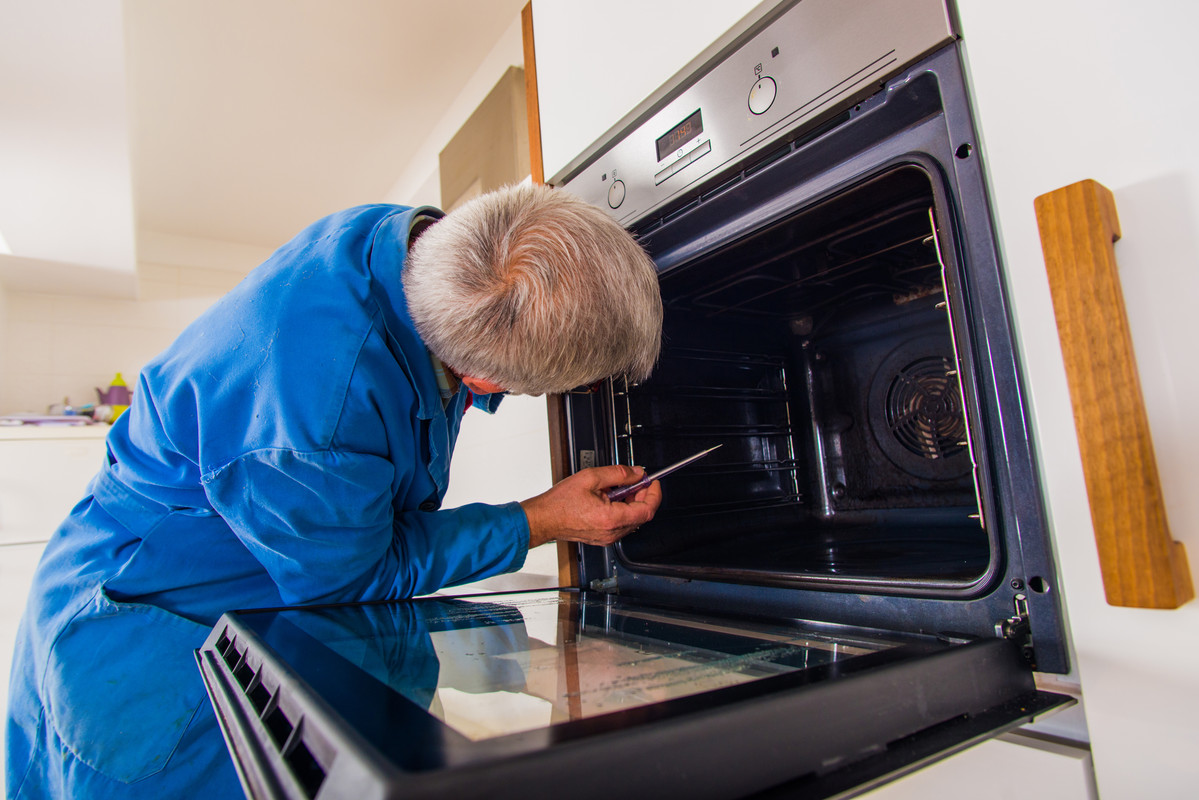Oven Repair – How to Fix It Yourself
by siteadmin

Ovens are one of the most frequently used appliances in the kitchen. Many people don't realize they need oven repair until something goes wrong with their oven. Then, they realize it's time to call a professional oven repair service. Fortunately, these repair services can often fix the problem fast. You can save yourself a lot of hassle and money by calling a qualified oven repair technician as soon as possible.
Electric ovens
Electric ovens are modern kitchen appliance that has an integrated electrical heating device and may have a built-in extractor hood. Originally, they were used to replace solid-fuel stoves that required more work to run. Electric stoves were easier to operate and became a popular alternative. The integrated heating device and built-in extractor hood are some of the key advantages of electric stoves.
Electric ovens operate with an electric heating element that is typically a wire. The wire is heated by the resistance of electricity and is suspended above the floor. The wire is insulated so that it will not cause a burn or shock when touched. An electric oven also has a more consistent cooking temperature compared to a gas oven, making it easier to cook a wide variety of dishes with even results.
Some electric ovens may have a thermostat that can be calibrated to control the temperature. The technical sheet for your oven will provide calibration instructions. Otherwise, the temperature is calibrated at the factory. A thermostat is an essential feature for electric ovens. An electronic thermostat can adjust the temperature easily. In addition, an electronic timer can automatically turn the oven on and off.
If you have the budget, you should consider getting an electric oven. The upfront cost of electric ovens may be less than gas ovens, but the ongoing cost of gas can quickly add up. While gas ovens are cheaper, they can be difficult to install and can be more expensive to purchase. Electric ovens use a heating coil inside the oven to evenly distribute the heat throughout the entire oven. Since the coil needs to be superheated before it can give off sufficient heat, electric ovens will take longer to get up to temperature.
Electric ovens come in many shapes and sizes, including combination units and free-standing units. The basic principle of operation is the same for all electric ovens. They also come with digital thermostats and fans, making it easier to regulate the temperature. Furthermore, most electric ovens come with self-cleaning controls and an interior light.
Electric ovens are safer than gas ovens. However, they do require a gas line, which requires a professional to install. Additionally, you will need a 240-volt outlet with a dedicated circuit. A dual fuel range can also be purchased, which combines a gas cooktop with an electric oven.
Electric ovens are becoming increasingly popular due to the fact that they do not use as much electricity as gas ovens. A typical electric oven will use between two and five hundred watts. These ovens are usually powered by 240-volt outlets and can draw up to 60-amps. While electricity is often generated by clean sources, gas ovens are not.
Electric ovens are also faster than gas ones. Some older models could not heat up as fast as gas ovens, but newer models are faster. One downside of gas ovens is that they have the potential to explode. This can occur due to an improperly installed gas line or a gas leak near the burners. While safety features in gas ovens prevent this from happening, they can malfunction in rare cases.
Gas ovens
Gas ovens operate using a mixture of air and natural gas. The gas is ignited by a spark from a small flame within a metal tube. The burner is fitted with precise outlets and sits at one end of the oven. The oven's safety valve is located in series with the ignitor.
Gas ovens are notorious for creating hot spots, making it important to rotate trays to ensure even baking. This is especially important if you bake multiple trays of cookies, cakes, or quick bread. Rotating trays is also essential if you plan to bake multiple trays of food for a long time.
Another major difference between electric and gas ovens is heat. The gas oven's heat source is more powerful than the electric one and can reach higher temperatures. The downside to this advantage is that the internal temperature of a gas oven fluctuates widely, making it less consistent than an electric oven. However, these ovens can be purchased at a lower cost than electric models.
Gas ovens are also environmentally friendly. Gas ovens are made from natural gas, which is a clean-burning fuel. Although gas ovens are more expensive to buy and install, they are cheaper in the long run because they use less energy than electric ones. Moreover, they allow you to control the temperature much more accurately.
Categories: Appliance Repair
Ovens are one of the most frequently used appliances in the kitchen. Many people don't realize they need oven repair until something goes wrong with their oven. Then, they realize it's time to call a professional oven repair service. Fortunately, these repair services can often fix the problem fast. You can save yourself a lot…
Recent Posts
- All Temp Air Conditioning & Refrigeration Unveils: Tampa Refrigerator Repair Services
- How Long Does Dishwasher Repair Typically Take, And What Is The Expected Cost?
- How long does dishwasher repair usually take, and what is the expected cost?
- How Long Will Dishwasher Service Take? And What Should I Expect to Pay?
- What Are the Potential Costs of Refrigerator Repair?
